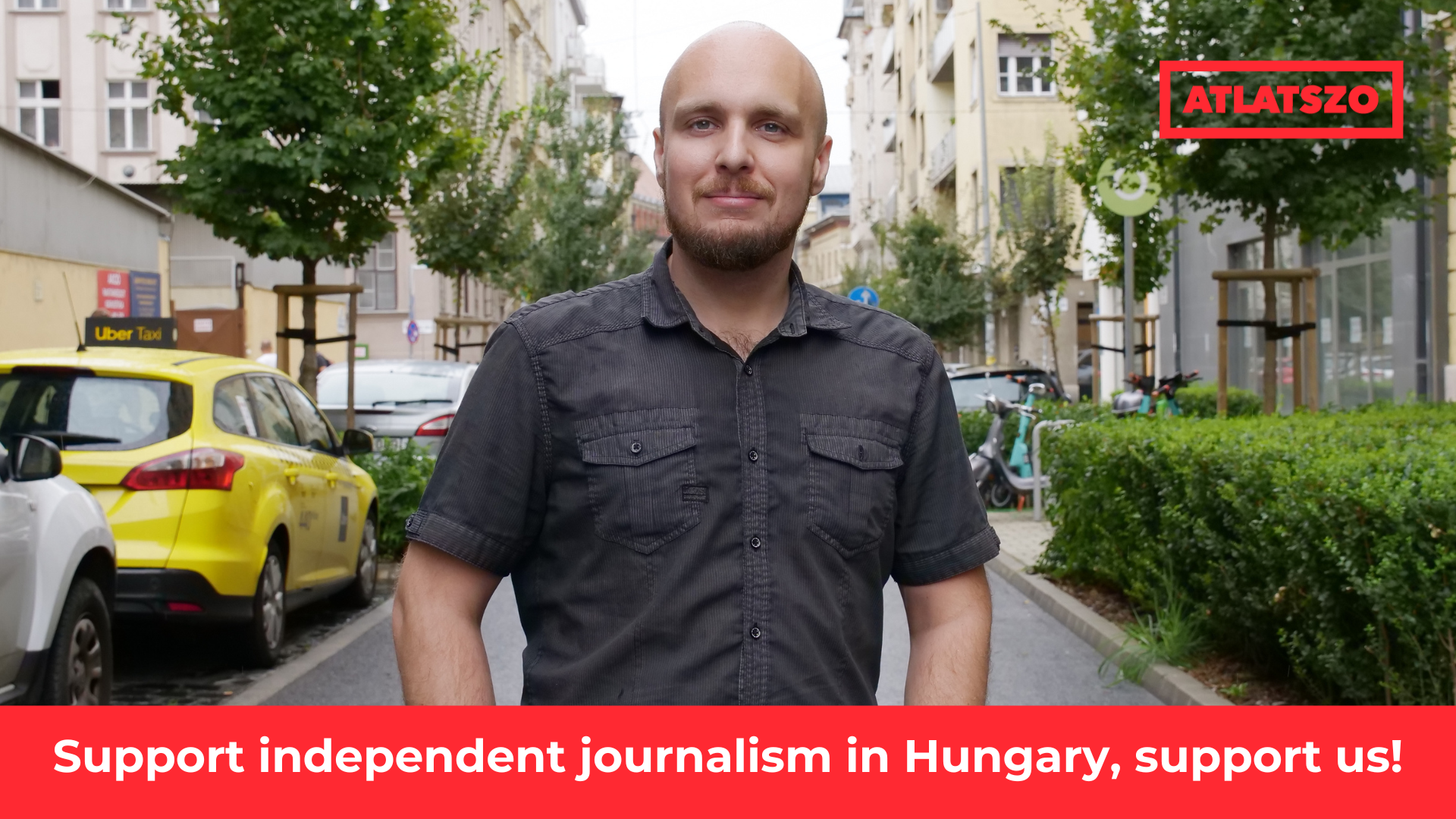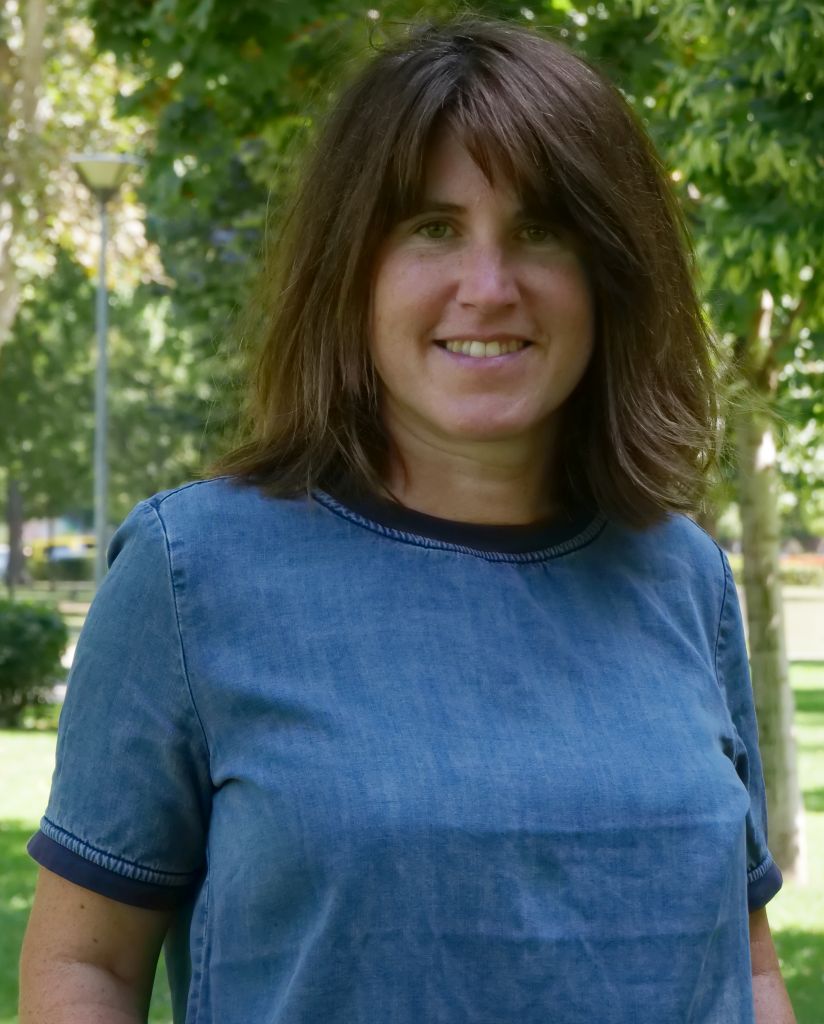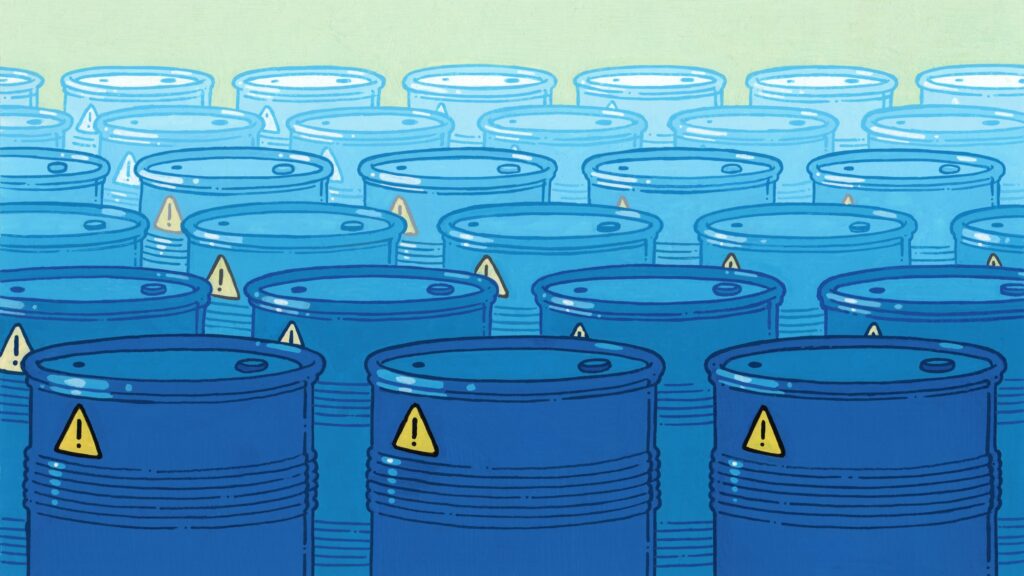The https://english.atlatszo.hu use cookies to track and profile customers such as action tags and pixel tracking on our website to assist our marketing. On our website we use technical, analytical, marketing and preference cookies. These are necessary for our site to work properly and to give us inforamation about how our site is used. See Cookies Policy
How the chemical industry doctored a new EU approval of a contested pesticide
There is growing evidence that glyphosate, the world’s most widely used weedkiller, carries serious risks for human health and the environment. Even so, in December 2023, the EU re-approved its use for another ten years. An international team of journalists including Átlátszó found that the chemical industry shapes the very documents on which regulators rely.
A key step in the EU’s pesticide approval process is a scientific literature review. One would expect this to be done by independent scientists or public authorities. In fact, the pesticide producers themselves – organised as the Glyphosate Renewal Group (GRG) – were responsible for identifying and reviewing the relevant literature. This allowed the industry to take the lead in shaping the very evidence on which regulators relied.

Of more than 12,000 studies initially identified in the public literature search, more than 85% were excluded during a first ‘Rapid Assessment,’ based on the titles and abstracts. The remaining studies moved on to a ‘Detailed Assessment,’ in which the full text was read. In the end, only 191 studies (1.6% of the original total) were deemed ‘relevant and reliable’ for inclusion in the final assessment report.
In theory, this filtering procedure appears rigorous. At each stage, the national pesticide authorities of selected EU member states can challenge the industry’s judgment and request further examination of an excluded study. A public consultation period can also lead to studies being re-examined. Finally, the European Food Safety Authority (EFSA), the EU’s regulatory body involved, can dismiss any study’s findings.
Nevertheless, a shortcut allows industry-funded studies to slip onto the main track and be listed as ‘references’ in the assessment report, our analysis shows.
‘Ludicrous and typical of EFSA’
Even the main assessment route itself is problematic. A GermanSwiss study showed that Roundup WeatherMax, a brand product with almost 50 percent glyphosate, causes severe developmental disorders and mortality in green lacewings, an insect that is used as biological pest control. However, the EFSA prefers studies of individual chemical components rather than of ‘formulated’ products that contain multiple ingredients. So, the agency dismissed the WeatherMax study because ‘not enough details were available for the formulation composition used’.
This was to the great discontent of agroecologist Angelika Hilbeck, one of the head scientists of the study. ‘This conclusion is ludicrous,’ she said in an interview with the journalistic team. ‘In real life, organisms are exposed to brand products, not to individual components.’ In fact, the EFSA itself has stated that peer-reviewed studies of formulated products can be considered in assessment procedures.
According to Hilbeck, the exclusion of Roundup WeatherMax shows that the EFSA’s risk assessment procedure is ‘fundamentally flawed’. ‘By evaluating commercial pesticide products by separating them into individual components, they underestimate the real risks,’ the scientist said.
Charles Benbrook, an American agricultural economist and researcher, also criticises the EFSA for narrowing its assessment to glyphosate as a pure substance, while ignoring the extensive independent research on glyphosate-based herbicide formulations to which farmers and applicators are actually exposed. ‘The science on formulated products is very different, and far more worrisome, than the science on pure glyphosate. EFSA can’t credibly claim that heavy and recurrent exposures to glyphosate-based pesticides are safe.’
When we approached Benbrook, he wasn’t even aware that one of his studies — an extensive review of glyphosate and blood cancers — had been rejected in the EU’s re-approval process.
According to the EFSA, the paper did ‘not impact the overall weight of evidence for genotoxicity on glyphosate’. ‘I do not agree,’ Benbrook protested. According to him, the EFSA and the pesticide industry can only sustain the “myth” that glyphosate poses no cancer risk by denying evidence of DNA damage. ‘But several dozen high-quality studies since 2016 show clear evidence of DNA damage from exposure to glyphosate and glyphosate-based herbicides. That is obviously relevant to any risk assessment.’

Tüntetõk tiltakoznak a glifozát használatának meghosszabbítása miatt Brüsszelben 2017. október 25-én. (MTI/EPA/Stephanie Lecocq)
The dismissal of an empirical study done by epidemiologist Mateus Dias also raises questions. It identified a link between glyphosate use and adverse birth outcomes. EFSA excluded the study, because ‘exposure assessment and correlation between birth outcomes seem to need further elucidation.’ According to Dias, the empirical strategy can only identify an association of effects and not offer final causal evidence. ‘But it is highly unlikely that the effects are associated with substances other than glyphosate.’
The EFSA took a similar strict approach in a comprehensive Flemish-German study that found a link between the intensity of agricultural land use around residential areas and elevated levels of AMPA, a degradation product of glyphosate, in human urine. The authority dismissed the study because it didn’t focus on glyphosate itself: ‘[AMPA is] not a specific glyphosate metabolite,’ and therefore ‘not relevant for peer review.’ With this line of reasoning, the EFSA contradicted its own ruling that ‘AMPA is a significant environmental breakdown product of glyphosate’.
Compromised independence
If the EFSA displays such inconsistencies in its handling of scientific evidence, this also raises concerns about the consistency and integrity of the earlier stages of the approval process and, most notably, about the role of the Rapporteur Member States (RMS). These are the national authorities responsible for conducting the initial evaluation of a pesticide’s safety and for setting the tone for what evidence enters the EU assessment pipeline. For glyphosate’s most recent renewal, this task was entrusted to a consortium of four national authorities, from France, Hungary, the Netherlands, and Sweden, collectively known as the Assessment Group on Glyphosate (AGG).
The Dutch Board for the Authorisation of Plant Protection Products and Biocides (CTGB) plays a dominant role in the approval of pesticides in Europe. ‘Especially of difficult and sensitive dossiers,’ as they claim. However, the CTGB’s scientific rigour and independence have come under serious scrutiny in recent years.
In two 2024 judgments, the European Court of Justice ruled that CTGB failed to apply up-to-date scientific standards when approving pesticides, potentially overlooking crucial health and environmental risks. Further concerns arose when the Dutch authority admitted that it had used an incorrect statistical method to assess cancer risks for decades.
To the Dutch parliament, it acknowledged that its assessment of the herbicide’s cumulative effects, impact on neurodegenerative diseases like Parkinson’s, and alignment with the Water Framework Directive needed to be improved.
Silenced oversight
Another flaw in the EU’s pesticide approval process has surfaced in Hungary, also a Rapporteur Member State to the glyphosate reapproval track, this time concerning public oversight. Gábor Tőkés, former head of the pesticide and fertiliser authorisation department at Hungary’s National Food Chain Safety Office (NÉBIH) told us that most of the work of the four rapporteur nations was handled by the national authorities in France and The Netherlands.
How did Hungary become a rapporteur nation in the first place? After the previous contentious glyphosate renewal (started in 2012, see also text box 2), older EU member states weren’t eager to take on this role. ‘The European Commission approached countries one by one,’ Tőkés said in an interview with our team. His office agreed, largely as a way to boost NÉBIH’s national standing. ‘We wanted to show the Ministry of Agriculture that NÉBIH was doing serious work, in the hope of increasing our staff.’
What followed was a sloppy process. ‘The Ministry of Agriculture did not consult the relevant Hungarian research institutes and NGOs,’ complained Béla Darvas, chairman of the Hungarian Society of Ecotoxicology, in an interview with our team. ‘Research protecting the interests of consumers was dismissed, and the decision was based only on the interests of the manufacturers. And the activities of the Plant Protection Committee were suspended during the glyphosate re-approval process.’
The Plant Protection Committee was founded in 2009 to ensure general stakeholder consultation about pesticide issues. According to Hungarian law, it should be assembled at least three times a year, but this did not happen between 2019 and 2023, when glyphosate was under reapproval review.
Gergely Simon, chemical expert with Greenpeace Hungary, was a member of the Plant Protection Committee for eight years, until the NGO decided to quit in May 2019. ‘We supported our position with research and publications from renowned international journals, but these were systematically ignored in the decision-making process,’ he recalled. ‘That was unacceptable for us.’
He added: ‘During my years in the Plant Protection Committee, the position of the Hungarian pesticide authority and of the Ministry of Agriculture always coincided with the arguments and interests of the pesticide manufacturers. In almost all the major pesticide disputes, the Committee has supported the position of the big agricultural and chemical industry lobby groups. We did not want to assist that any longer.’
Former NÉBIH-head Tőkés, as well as another source previously working there, deny any big industry lobby in the Hungarian track of the glyphosate renewal process. ‘Laymen always think that multinational companies lobby unscrupulously,’ Tőkés said. ‘But in fact, it is rather the small, no-name companies with ties to the government who do that.’
According to Béla Darvas, from the Hungarian Society of Ecotoxicology, large corporations do indeed refrain from directly lobbying government institutions. ‘Nowadays, they use their advocacy organisation: the European Crop Protection Association. In Hungary, it is the Hungarian Crop Protection Association.’
Confronted with these stories, former NÉBIH-head Tőkés defended the organisation. ‘When some chemical was proposed for removal, we supported it most of the time.’ But he also admitted that the Hungarian government’s approach is ‘to support farmers as much as possible’. As a result, ’we did not vote against the approval of an active substance, unless there was clear scientific evidence that it was dangerous to the environment or to human health.’
In response to criticism that NÉBIH has not taken into account earlier national research on glyphosate by the National Directorate General for Water, a spokesperson reacted formally. ‘The evaluation was based on the dossier submitted by the applicants, the Glyphosate Renewal Group. The dossier included the relevant studies performed by the applicants and available in the literature.’
Industry in the driver’s seat
Industry influence runs through the entire European pesticide approval process, we found, not just in Hungary. A key player is Knoell. This Germany-based consultancy was criticised for copy-pasting industry documents into glyphosate’s 2012 evaluation dossier. Yet, the industry, united in the Glyphosate Renewal Group, hired Knoell once again in 2019 to coordinate the recent re-approval dossier. Internal correspondence obtained through freedom of information requests shows that Knoell didn’t limit itself to a technical role but also shaped content, guided communication, and mediated between the applicant group and the regulators throughout the process.
One regulatory official of KEMI, the Swedish Chemicals Agency and one of the four European authorities to evaluate glyphosate, noted in an email: ‘Knoell will send the revised draft [of an application text] to all AGG [national authorities] members tomorrow morning, with the GRG’s [industry] final comments integrated.’ Another e-mail described the consultant as ‘our main contact for both technical and procedural follow-up.’
Knoell was worth its fee. An industry submission on hormone disruption was adopted in the submission draft almost word-for-word. A staff member wrote internally: ‘All comments have been copied and incorporated into the new version’ [of the submission]. This included a now widely quoted sentence: ‘There is no evidence of ED [hormone disruption] properties in glyphosate.’ We found no further discussion or scientific rebuttal in the documentation nor in the e-mail communication.
The industry’s influence on the re-approval dossier is widespread and pervasive. Certain animal studies have reported statistically significant increases in tumour incidence associated with glyphosate exposure. Yet, the final application report stated: “Such findings must be interpreted in the context of historical control data and dose–response relationships”. That sentence, a subtle way of downplaying the findings by framing them as falling within normal biological variation, first appeared in an (industrial) GRG comment and made it into the final dossier with no indication that it came from the applicant.
When the Glyphosate Renewal Group proposed lower, so-called “realistic” operator exposure estimates, claiming they reflected actual field conditions, these values were accepted as expert judgment, even though they effectively reflected the applicant’s own assumptions and lacked independent external verification. The new exposure assumptions were then integrated into the risk assessment.
Edited text blocks from the industry representative were incorporated into draft reports on a routine basis. One internal comment from KEMI on a rewritten paragraph read: ‘Assuming this reflects the agreed understanding, we have no objections.’ Another stated: ‘The phrasing is acceptable as long as it is used exclusively for this case.’ There was no effort to mark these contributions as external or to reflect their origin.
Deadlines, too, proved negotiable. Documentation from the industry was submitted in phases. Files arrived late or incomplete. But each time, they were accepted. ‘We confirm receipt of the updated submission.’ Not once was there a reminder, warning, objection or refusal in the internal documentation that was made public.
Shift in Ownership
Industry influence shaped the discussions on a national level as well. In 2023, Sweden initially objected to the phrasing of the European Commission’s draft glyphosate renewal decision. Internal notes to KEMI described it as ‘a deviation from previous approval texts’ and ‘problematic due to lack of scientific anchoring.’ Still, the final Swedish recommendation read: ‘We will not raise fundamental objections, provided that the wording is restricted to glyphosate only.’ The same phrases remained in the final version.
When the industry requested that large sections of the submitted file, with information about methodologies, author identities, and raw data, would be treated as confidential, KEMI processed these requests without indicating any review. In the final version too, redactions submitted by Knoell were accepted, without any trace of debate over whether they were justified.
Meanwhile, KEMI’s administrative responses to external questions were almost snippy. When a scientist connected to KEMI asked why a certain study on developmental toxicity had been excluded, the reply was simply: ‘The tested formulation is no longer authorised; therefore, the study is not considered relevant.’ There was no engagement with the scientific content of the study itself.
In essence, the Swedish chemicals agency transferred control of the review process to Knoell and the industry group. They provided data, summaries, and wording of the Swedish review file. Instead of acting as an independent assessor, the agency showed signs of an echo chamber.
Science sidelined
Looking at all the evidence from this investigation, one cannot escape the conclusion: Europe’s chemical regulatory system is seriously flawed. It is a system in which independent science is filtered out, industry drafts are echoed, and public oversight quietly yields ground to commercial interests.
In the Netherlands, Hungary, and Sweden, the three Rapporteur Member States examined in this study, similar patterns emerge (note: France’s role in the glyphosate renewal was not included in this phase of the investigation due to time and capacity constraints but may be analysed at a later stage). While authorities formally deny any undue industry influence, their correspondence and draft reports suggest otherwise.
Glyphosate’s 10-year re-approval may fade from headlines, but what remains is a shadow over Europe’s scientific integrity. For agroecologist Hilbeck, the glyphosate dossier is just another example of a system designed to protect industry rather than people or ecosystems. Regulators, she says, ‘feel completely safe in what they do’ because the rules allow them to dismiss evidence of harm by assessing only isolated ingredients, not the commercial products to which living organisms are exposed.’ And she added: ‘If the precautionary principle enshrined in the EU’s founding treaties was taken seriously, glyphosate would have been banned long ago.’
The authorisation of pesticides in the European Union follows a highly-formalised procedure. Every active substance must be re-evaluated periodically, usually every ten to fifteen years. In this case, the process began with the Glyphosate Renewal Group (GRG), a consortium of companies marketing glyphosate, submitting a renewal dossier containing thousands of studies, including industry-sponsored toxicology and exposure data.
Written by Marco van Kerkhoven, Orsolya Fülöp, Lucy King. Cover image: The Investigative Desk. Marco van Kerkhoven is a contributor to The Investigative Desk, a dutch platform which describes itself as a “group of specialised investigative journalists” in the Netherlands. Orsolya Fülöp works for Átlátszó (Atlatszo.hu), a non-profit investigative editorial office in Hungary. Lucy King is an Australian-based visual and data journalist who worked at The New York Times. This investigation was funded by the Journalismfund Europe. The Hungarian version of this story is here.


